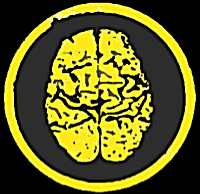Left Lobe
Introduction
(Content overview).
Defining a brand
Chapter one
Brand etymology.
Cave drawings.
Transferable Association.
Traditional Theory.
Mass media.
Object relations.
Libidinal 'I.
Introjected Brand Article (IBA).
Oral Fixation.
Sequence of cognition.
Gestaltism.
Design closure.
Signifier.
Sign.
Signified.
Scent branding.
Mere Exposure.
Familiarity Liking Effect.
Word/logo blindness.
Memory.
Chapter two
Political branding.
Deductive reasoning.
Coprocats cacodoxy
iPhone 4.
Cool brands.
Free gifts.
The moral network.
Guilt and behaviour.
Admission of guilt.
Online scams.
Shared brand responsibility.
International trust.
Evolutionary belief.
Chapter three
Consumer culture
Cognitive dissonance.
iPhone 6
Buyer’s remorse.
Complaints culture.
Ego depletion.
Brodmann region.
Media viewing habits.
Chapter four
Big Data
Data competence.
Data Paradoxes.
Hacking.
Small data.
Shock branding.
Virtualised experiences.
Consumer privacy.
Spokesperson lies.
Deep Web.
Dark Web.
Real-time engagement.
Programmatic media trading.
Chapter five
Tobacco marketing
Subliminal branding.
Behavioural branding.
Brand placement.
Marketing to children.
Environmental effect.
Chapter Six
Braess Paradox.
Nash Equilibrium.
Competitive tactics.
Boston Matrix.
Brand Benchmarking.
Customer complaints.
Brand expectations.
Decoy pricing.
Valence model.
Age of Continuum
Erikson’s stages.
Consumer life stages.
Cuckoo brands
Chapter seven
Authenticity Egg
Traditional brand values.
Brand belief and faith.
Olympic branding.
Country propaganda.
Sponsorship.
Chapter eight
Proposition framing.
Collective consciousness.
The Limbic system.
Trust games.
Nostalgia.
Repetition and truth.
Brand mythology and youth.
Celebrity scandals.
Chapter nine
Asch Paradigm.
Eye-tracking.
Herd behaviour.
Industry experts.
Effect of Experts.
Advertising codes.
Reciprocity.
Brand vapour.
Advergaming.
Cialdini’s Scarcity.
Commitment and consistency.
Reputation management companies.
Fake reviews.Brand sycophants.
Terror Management Theory.
Chapter ten
Egocentric communications.
Sociocentric communications.
Front cortex.
Repetition blindness.
Sympathetic pricing.
Fusiform gyrus.
Scheibe Illusion.
DNA and behaviour.
Continuous Partial Attention.
Decreasing attention spans.
Golden Rule of Habit Change.
Operant conditioning
Skinner Box.
Reward pathway.
Operant Conditioning.
Thornkyke’s Law of Effect.
Hedonic adapton.
Info-lust.
Digital snacking.
Brain plasticity.
Choice support bias.
Fear of Missing Out (FOMO).
Brand gamification.
Online sharing.
Small society trends.
Grandiose self.
Dunbar number.
Word of Mouth.
Chapter eleven
Cultivation theory.
Mean world syndrome.
Social democratisation.
Social engineering.
Online disinhibition types.
Gamer motivation.
Trolls.
True self, false self.
Selfies.
Dissociation.
Ego surfing.
Brand defamation.
Chapter twelve
Maslow’s Hierarchy
Intrinsic/Extrinsic motivation.
Keys to fulfilling self-determination.
B-needs.
D-needs.
Consumer collaboration.
Regulatory Focus (Fit) Theory
Nomothetic psychology.
Idiographic traits.
Tribal heuristics.
Choice Supportive Bias.
CREDs.
Technological thanatophobia.
Consumer hoarding.
Anterior cingulate cortex.
Brand Trinity
Philanthropic vs. Misanthropic consumers
The New Needs Hierarchy
Chapter thirteen
Medial prefrontal cortex/ Brain 'GOD' spot.
Hypersensitive agency detection.
Tweet-shaming.
Snark-fests.
Automated authenticity.
Facebook feuds.
Code-name ‘Pheme’.

